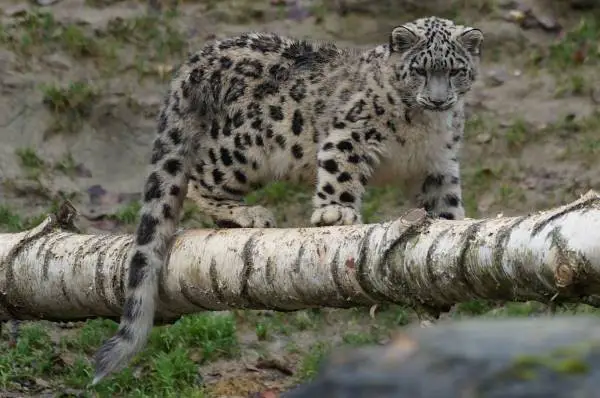Snow leopards have pretty long tails—which is probably one of many useful adaptations for surviving in cold habitats. The snow leopard’s tail is about 80 – 100 cm in length as against its body length of 48 – 60 cm, making it nearly twice the length of its body length.
The dense furry tail serves a good many number of purposes. The snow leopard uses its bushy tail to keep balance when it leaps or simply when it jumps across over the crevices or rocky areas. The long flexible tail also plays its part when the leopard runs after its prey and the prey is not running in a straight direction. Many antelopes would run in a haphazard fashion. The tail allows the leopard to maneuver rather quickly. If a snow leopard had short tail then it would have probably ended up more unsuccessful chases. That is to say that snow leopards likely rely on their long tail during running and hunting.
The snow leopard also uses its tail to keep its body let alone sensitive body parts warm and safe from extreme mountain chill. The leopard uses its tail as a blanket when it is asleep or relaxing in a cave. When there is a cold breeze the leopard wraps the tail around their body.
References and Further Reading
Landau, Elaine. (2010). Snow Leopards: Hunters of the Snow and Ice. Chicago: Enslow Publishers, Inc. pp.











